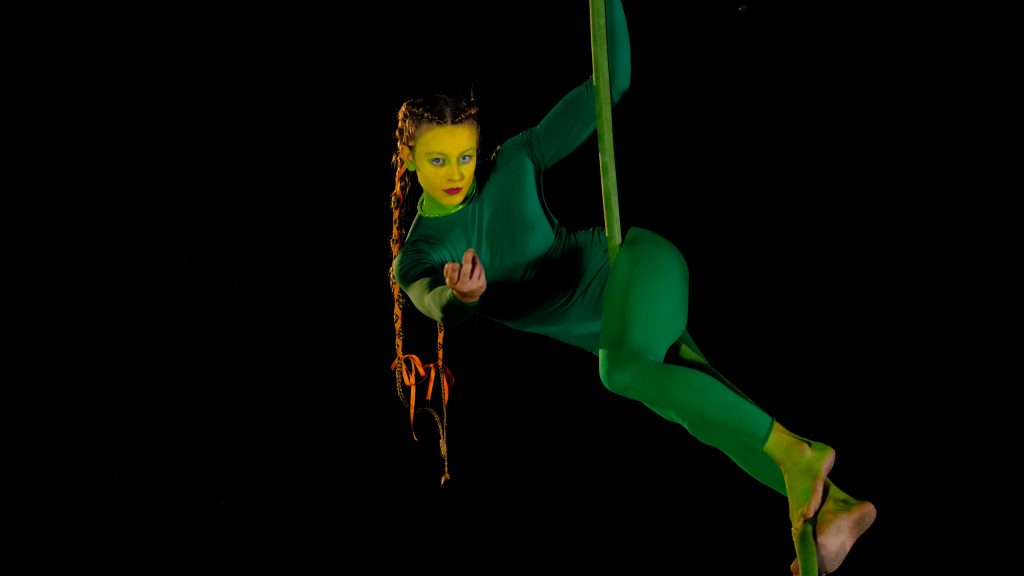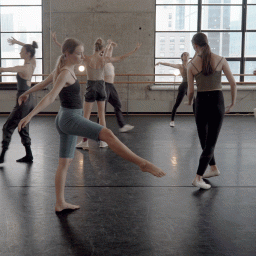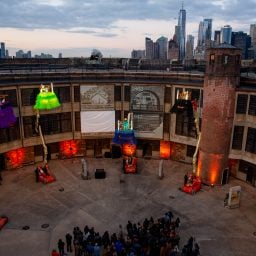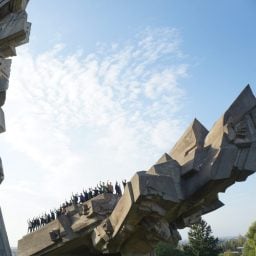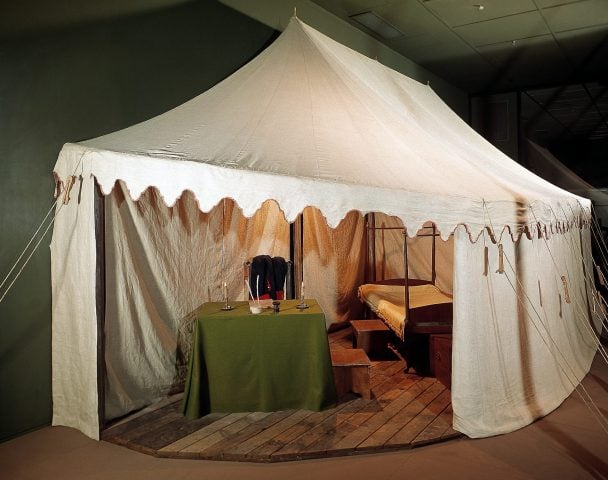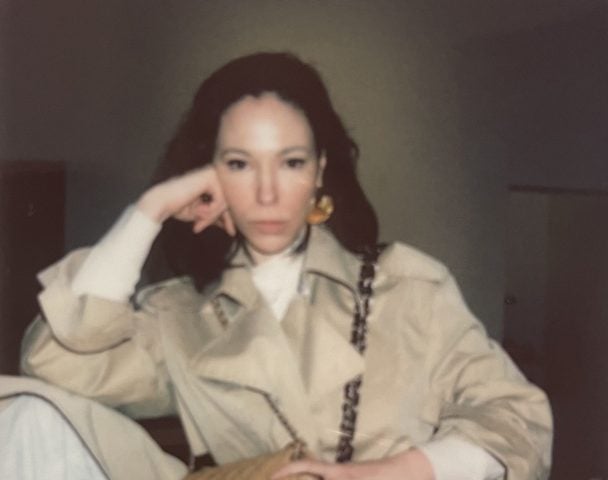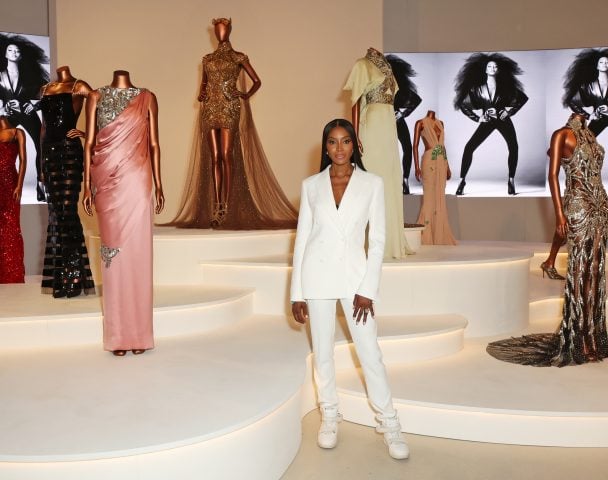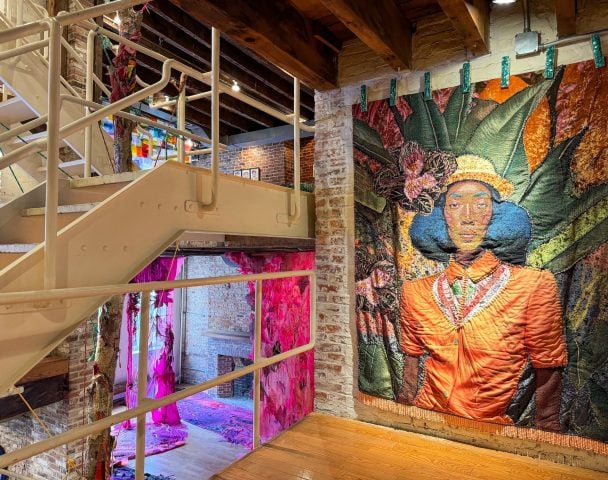When Marina Abramović re-created Joseph Beuys’s legendary performance piece How to Explain Pictures to a Dead Hare (1965), at the inaugural Performa Biennial at the Solomon R. Guggenheim Museum in 2005, there was little hint that performance art was about to transcend its previously niche status.
Since that initial outing, however, a parade of international artists—some well-known, others on the cusp of becoming so—have produced a vast, vibrant, and surprising body of installations, plays, dances, videos, and happenings. Along the way, Performa has arguably commissioned or presented a masterpiece or two. Says art historian RoseLee Goldberg, who founded and still helms Performa as director and chief curator: “We showed this work could reach a much different audience. We made people very curious.”
Seventeen years on, Performa can take some credit for the rise of the event-hungry experiential economy. It has altered or accelerated artists’ careers, changed the architecture and programming of museums, spurred copycat events, and encouraged artists to become multimedia and multi-platform. It has even presaged the rebirth of the creative collectives that are today fueling the NFT art market, And, not incidentally, it helped heal New York City after 9/11.
As the ninth edition kicks off on Tuesday, October 12, with a three-week slate of events conceived for outdoor locations throughout New York City, here is a look back at what mattered, and what’s coming.
2005
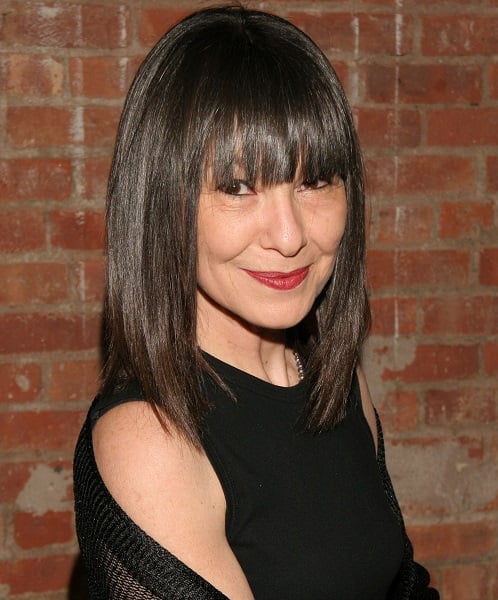
RoseLee Goldberg, founding director and curator of Performa. Photo: Patrick McMullan
Performance art is notoriously difficult to sell, so it is ironic that its rise coincided with a great art-market boom, during which the auction houses had (temporarily) grabbed the spotlight. Performance art as we think of it now is roughly a century old—dating back to the Futurist movement circa 1909—but collectors only knew it from grainy archival footage of 1960s–70s events that just looked peculiar.
Building on this canon, however, and coming out of left field, Performa 05 was anchored by Abramović’s magnetic marathon of several classics of the genre. Her weeklong run of the Guggenheim’s rotunda was unlike much of what was available at the time as either culture or entertainment, and gradually grew packed with open-mouthed young people who might normally have been at the movies. They encircled Abramović, entranced. By the final days, the festival had a “don’t miss this” buzz. Performa had keyed into the FOMO that was later to grip the millennial generation.
2007
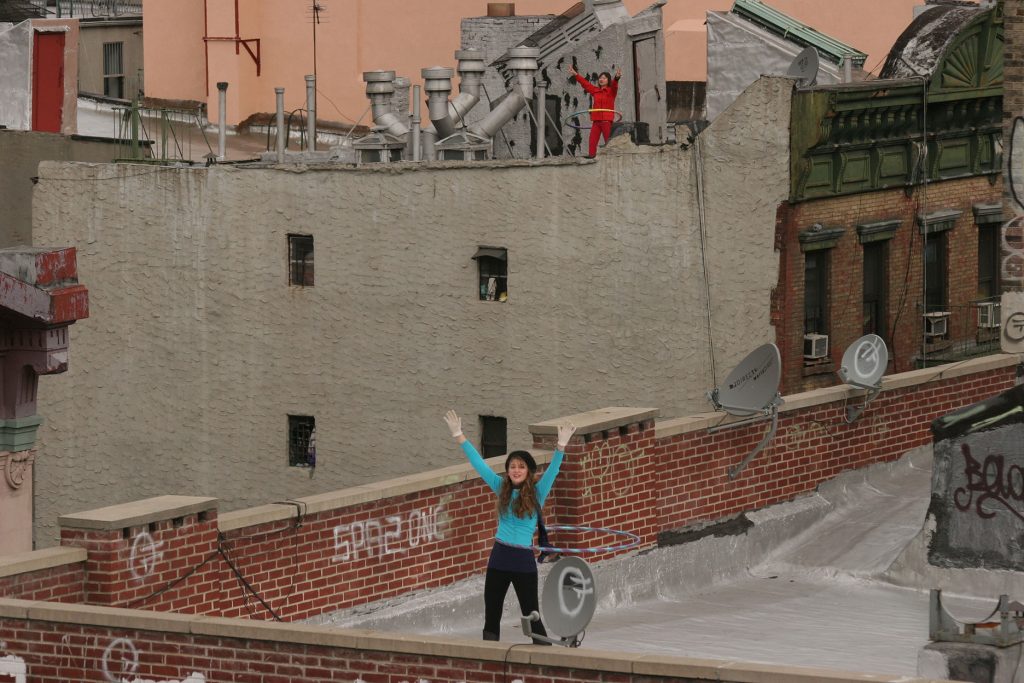
Christian Jankowski’s Rooftop Routine (2007), commissioned for Performa 07. Photo: Paula Court. Courtesy of Performa.
If Performa 05 seemed conjured out of thin air, by November 2007, the city and the artistic community were eagerly anticipating an even larger program. But the second edition went on to establish a recurring theme in Performa history: the big names often don’t end up doing the most important pieces.
Take the marquee event, Francesco Vezzoli’s interpretation of Pirandello’s 1917 play Right You Are (If You Think You Are), with a glamorous cast topped by Cate Blanchett. But, as its premiere was delayed into the night, art-world swells queued up on Fifth Avenue, cranky and smoking like Magritte chimneys (it was, after all, 2007). The New York Times dubbed the show “court entertainment in the guise of suburban dinner theater.”
Instead, celebrity-free pieces captivated: a claymation horror film by Nathalie Djurberg and the silly, delirious Rooftop Routine. On roofs in lower Manhattan, some two dozen performers spun in hula hoops in a piece choreographed by video artist Christian Jankowski. Was it just by chance that those very same rooftops had given New Yorkers a searing view of the Twin Towers four years earlier? The piece reclaimed those spaces. And the ebullient, wacky hula-hooping image became emblematic of Performa.
2009
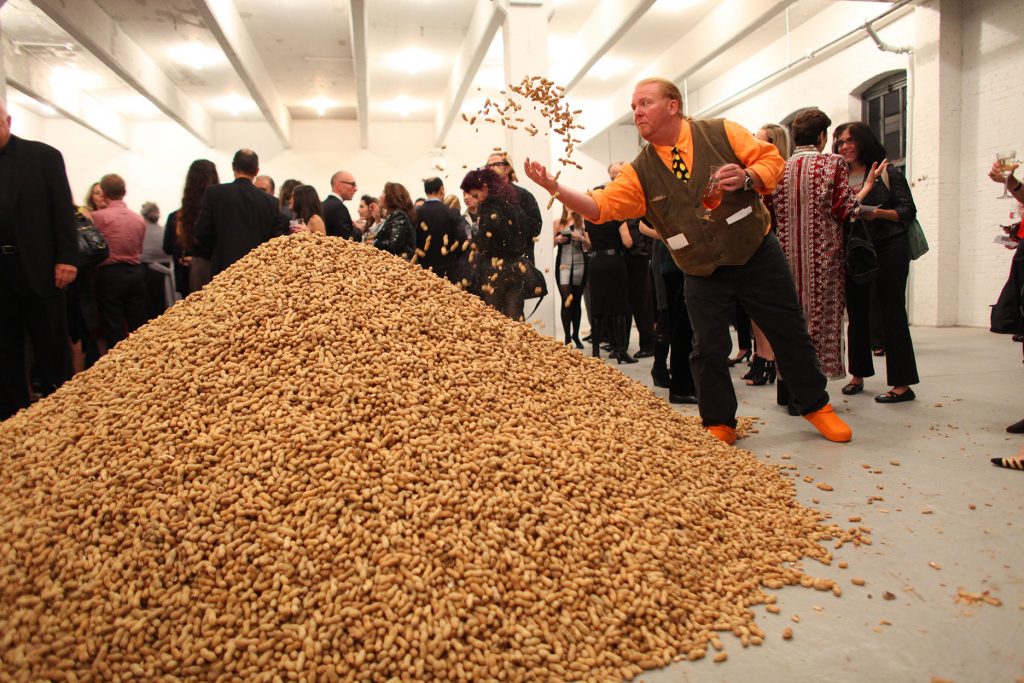
Jennifer Rubell, Creation, the Performa 09 opening night benefit dinner. Photo: Paula Court. Courtesy of Performa.
By its third iteration, everybody wanted in: Guy Ben-Ner, Wangechi Mutu, Joan Jonas, and The Bruce High Quality Foundation were just a handful of participants. This year, Performa notched more than 150 artists and 80 locations.
But there was a problem: the Great Recession. Performa 09’s opening gala—designed by artist and “eventist” Jennifer Rubell—needed to skew spectacular, not glamorous. So, at Dia:Chelsea, hundreds of BBQ ribs sat in a heap under a dripping honeycomb as superstar chef Mario Batali ladled on sauce. The bar, inside a freight elevator, was self-serve. Guests commuted between floors deemed “heaven” and “hell.” Hell featured dessert and Jeff Koons: full-size replicas of his famous stainless-steel rabbit, made of chocolate.
The golden ticket was for Mike Kelley’s Day Is Done. Inspired by yearbook photos, it was one of Performa’s more successful dance pieces. The show combined a game of basketball, a horn section and, curiously but arrestingly, a parade of shiny, naked men carrying ladders.
2011
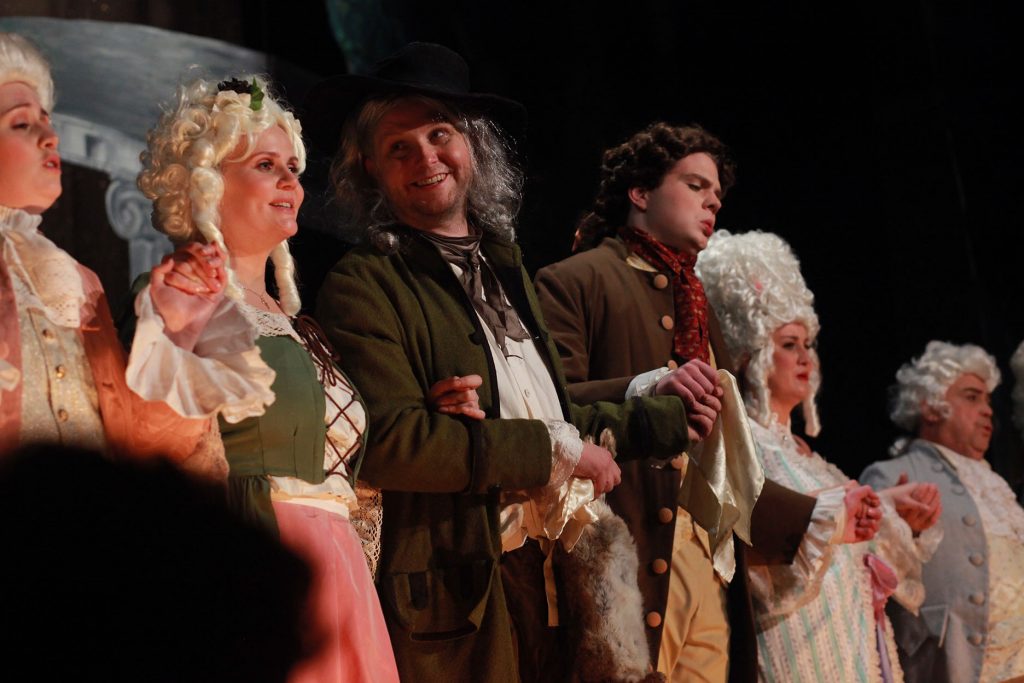
Ragnar Kjartansson, Bliss (2011), commissioned for Performa 11. Photo: Paula Court. Courtesy of Performa.
By now, Performa had found its groove, if not a fixed formula: a mix of dissonance and dissidents, visual opulence, inside jokes, nudity, and absurdity. Not all works were successful by any means. But this year Performa had possibly its greatest: the hypnotic Bliss.
“Hypnotic” is an overused adjective in the art world, but Ragnar Kjartansson’s show was exactly that—even narcotic. Simply put, a small group of opera singers and musicians performed the last three minutes of the gorgeous final aria of The Marriage of Figaro—again and again and again, for 12 hours. An act of beauty, insanity, will, and stamina, it was a cultural car crash scored by Mozart, with some performers seemingly running out of breath, others serving water to exhausted colleagues, some bouncing the melodies back and forth to each other as one singer seemed on the verge of giving up. Audience members sat for hours, and then returned for more.
2013
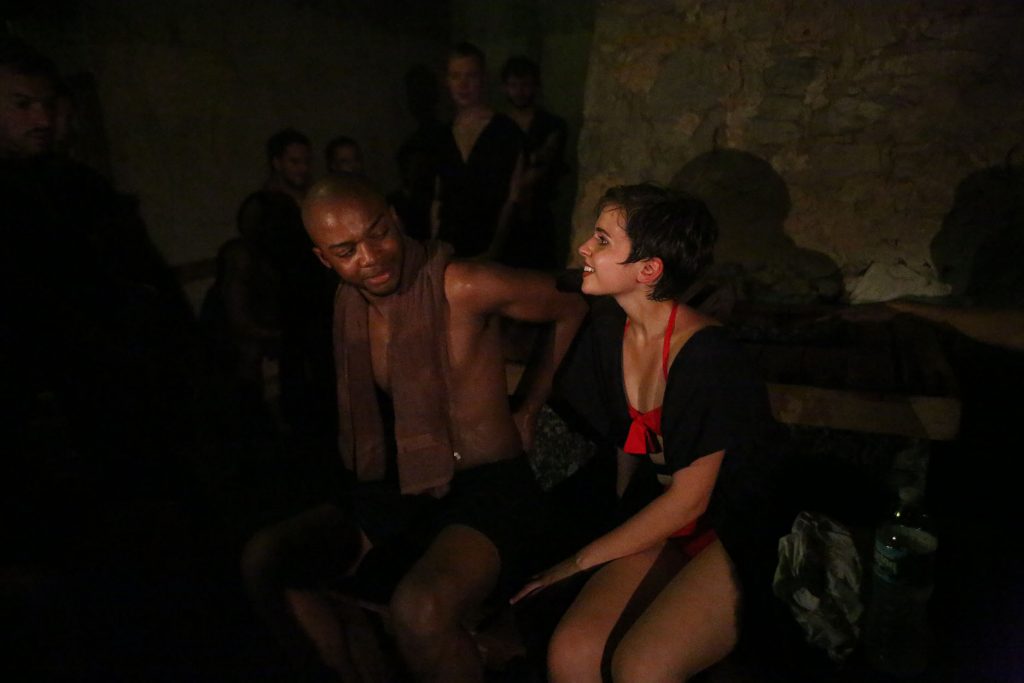
Rashid Johnson, Dutchman (2013), commissioned for Performa 13. Photo: Paula Court. Courtesy of Performa.
This was the year that performance art hit the mainstream, as Jay-Z danced with Goldberg and Abramović in a video. Performa inaugurated global “pavilions.” And Rashid Johnson tackled his first performance piece, a production of Amiri Baraka’s 1960s-era play Dutchman.
A sauna in a Lower East Side bathhouse was used to replicate the tight quarters of a subway car. Wrapped in bath towels and slicked with sweat, art lovers gathered for a searing staging of the work in which a chat between a Black man and a white woman turns brutal.
Dutchman changed the course of Johnson’s career, Goldberg noted, putting him “in a new framework”: He decided he liked bigger projects.
2015
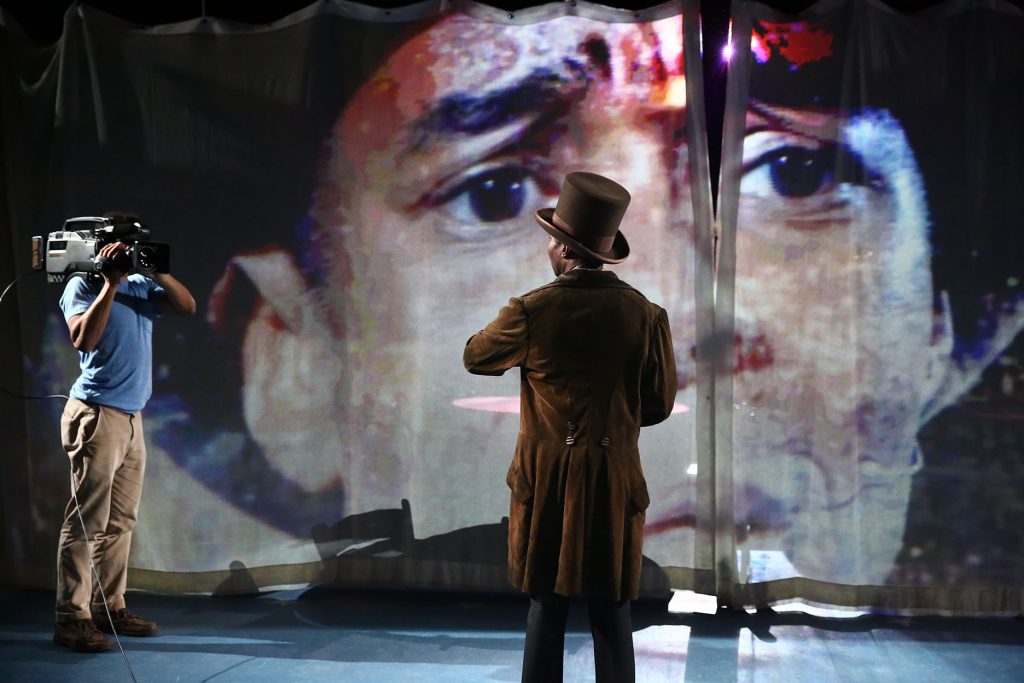
Edgar Arceneaux, Until, Until, Until… (2015), commissioned for Performa 15 and Malcolm McLaren Award winner. Photo: Paula Court. Courtesy of Performa.
This year’s most memorable piece, by artist Edgar Arceneaux, righted a historical wrong. In 1981, Broadway and Roots star Ben Vereen was invited to appear at the Reagan inauguration. His act was two-part, and controversial. In the first part, saluting the great black vaudeville performer Bert Williams, Vereen took the stage in blackface and belted a boisterous “Waiting for the Robert E. Lee.” In the second part, Vereen, still as Williams, acted out an attempt to buy drinks for cheering members of the audience—but, in the piece, he was denied service.
ABC did not air the second half. Instead, it cut to commercial, then to Donny and Marie Osmond. Vereen was sharply criticized in the Black community for indulging in minstrelsy for seemingly little reason. Arceneaux’s play Until, Until, Until… restaged Vereen’s full performance. It was heartbreakingly beautiful.
2017
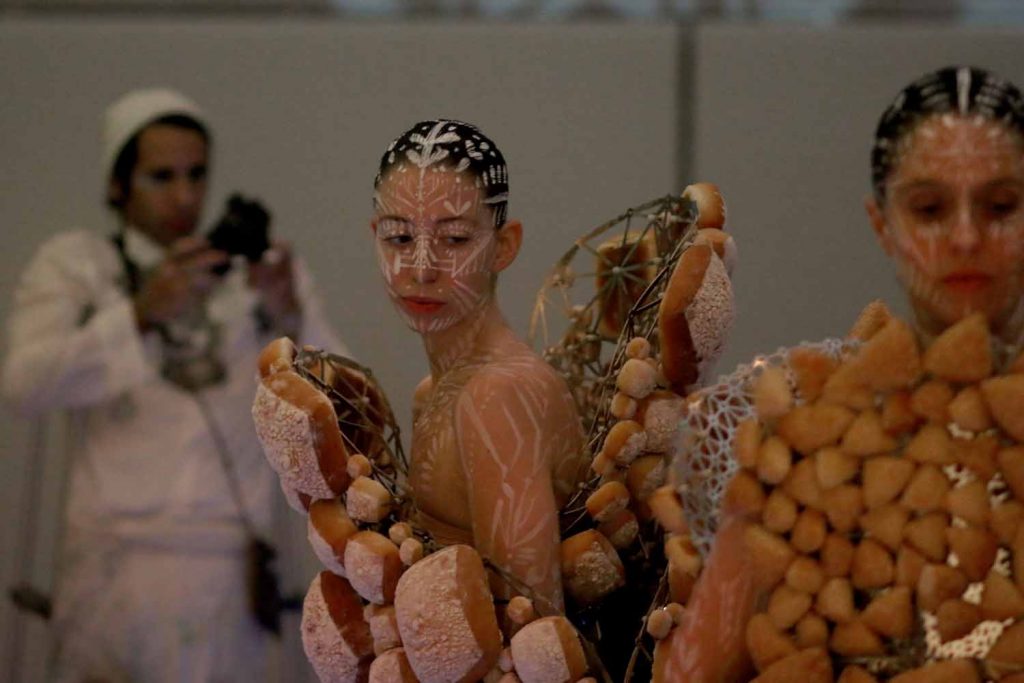
Threeasfour, Fest (2013). Presented by the Jewish Museum for Performa 13. Photo by Chani Bockwinkel, courtesy of Performa.
threeASFOUR, Fest (2013), presented by the Jewish Museum for Performa 13. Photo: Chani Bockwinkel. Courtesy of Performa.
South African artist William Kentridge, a Performa veteran, this time took the stage with a roar. His piece was based on a Dadaist work presented by Kurt Schwitters in 1932. Ursonate (primal sonata)’s series of nonsense sounds were transformed into a passionate lecture, opera, and conversation. Barbara Kruger, not to be outdone, took over a skate park on the Lower East Side.
More intimate was fashion collective threeASFOUR’s Fest. I brought, with some trepidation, my elderly aunt—for decades a seamstress in New York’s fashion business—to the show. In a series of actions around clothing that almost seemed religious, the audience engaged in ritual hand-washing, then pulled chunks of freshly baked bread from the performers’ outfits and shared the food with them. My aunt, 97, was mesmerized.
2019
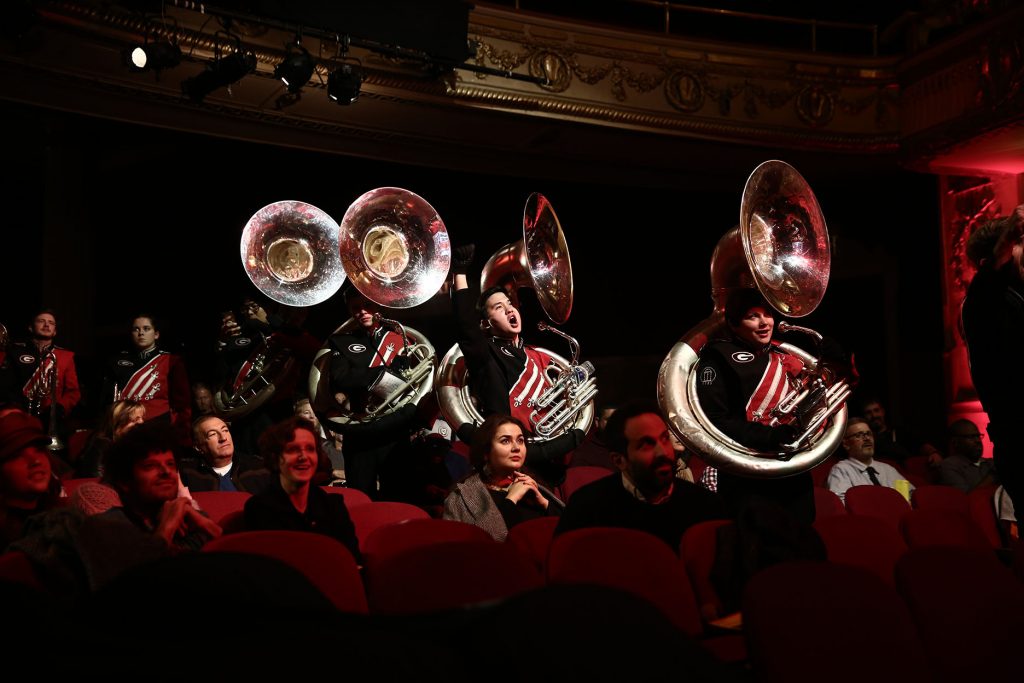
Paul Pfeiffer, University of Georgia Redcoat Band Live (2019), commissioned for Performa 19. Photo: Paula Court. Courtesy of Performa.
Performa is rarely visually subtle, and this year, The Immortals, artist Samson Young’s interpretation of a Chinese folk tale, employed giant construction cranes lit in rainbow colors.
Paul Pfeiffer’s Redcoat Marching Band/R, staged at Harlem’s legendary Apollo Theater, was even louder. Presenting a “soundtrack to one of America’s most popular mass rituals”—the football game—Pfeiffer orchestrated an unlikely juxtaposition. Fifty members of the University of Georgia band came playing and marching into the Apollo as, onscreen, the rest of the 400-member troupe joined in back in the university’s stadium.
There were scattered technical and sound problems. But one look at the nutty, glorious delight and raw confusion on the faces of the trumpet-blowing Georgia students swarming the Apollo was unforgettable.
2021
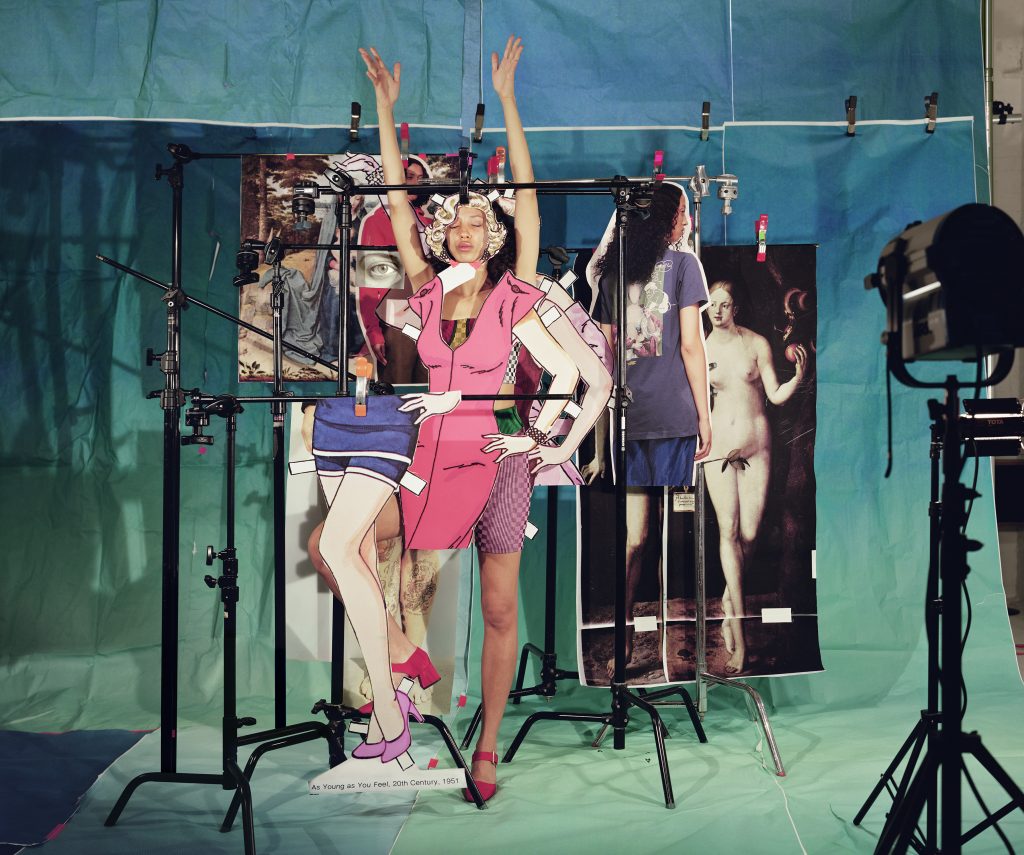
Sara Cwynar, Sahara from SSENSE.com (As Young as You Feel) (2020). Image courtesy of the artist
This year, Covid-19 has curtailed the crew to mostly U.S. artists, and trimmed the number of commissions to eight, all outside. They are staged at some of New York’s legendary locations: Top of the Rock, the Brooklyn Bridge, and Rockaway Beach among them. A telethon kicks off October 12. Everything will be streamed live.
This year’s slate includes commissions from Tschabalala Self, who wrote a play to be enacted at Jackie Robinson Park in front of sets she painted. Erika Beckman will mount an elaborate, anticapitalist Jack and the Beanstalk in the shadow of the Brooklyn Bridge. Sara Cwynar offers a searing look at the advertising industry, staged within a shuttered Fifth Avenue retailer. Kevin Beasley will create a sound sculpture of, and on, the Lower East Side’s Orchard and Rivington Streets.
Goldberg told Artnet News that when Performa first began, “New York was the star of the show, it couldn’t be anything else.” That fondness and focus returns this year—and, one hopes, so does the glorious “what-the-hell-is-going-on-here?” absurdity.
Performa 21 takes place October 12–31, at various venues throughout New York City and online.
Follow Artnet News on Facebook:
Want to stay ahead of the art world? Subscribe to our newsletter to get the breaking news, eye-opening interviews, and incisive critical takes that drive the conversation forward.
